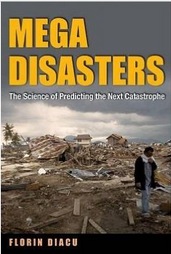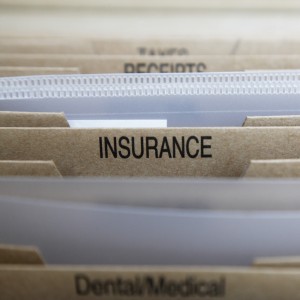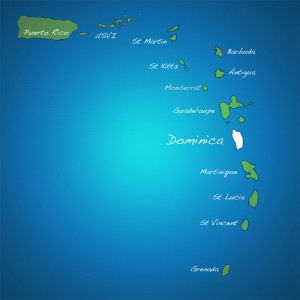Hurricane Irene struck in an unexpected way, causing greater damage to mountainous areas removed from the coast than to direct coastal exposures. Irene brought Vermont the worst flooding in over 100 years. The following are tips modified from an earlier blog posting for Nashville residents coping with epic, 1-in-500-year floods, but they are relevant to the affected small businesses today:
1. Rapid response is critical. Many small business owners will be in a state of shock and disbelief as a consequence of the disaster. However difficult it may be, they must manage their emotions and work to restore operations as soon as possible. The choice is not whether to recover quickly or whether to recover at a more measured pace. The choice is whether to recover quickly or not to recover at all. A study of small businesses affected by the 1993 World Trade Center bombing found that of those businesses that could not restore operations within five business days, 90% of them were out of business within one year. Prioritize your business needs according to relative urgency and delegate where necessary.
2. Mitigate your losses. To establish a valid property insurance claim, you must demonstrate to your insurer that you acted in good faith to mitigate your insured losses. Consider a hypothetical example. Let’s imagine that you have returned to your property and you see broken glass about the site. You must take reasonable steps to insure that the broken glass will not injure people. Insurance companies are not very tolerant of passive policyholders who fail to act in their interests to limit losses. Limit subsequent losses to your business by taking prudent steps, such as restoring fire sprinklers or other equipment that may have been damaged by the storm.
3. Identify your implicated policies. You should invest the time and effort required to examine all insurance policies implicated in the disaster, rather than foreclose options for coverage by limiting the scope of your review. Begin with insurance policies for first-party property losses that cover direct property damage, including collateral damage and indirect property damage, such as business interruption losses and loss-related expenses. Next review all-risk policies, named peril policies, business owner’s policies, policies covering particular endorsements, valuable papers and records policies.
4. Provide timely notice. Your business owner’s policy likely requires you to provide timely notice to your insurance company of covered losses. Do not forfeit indemnification for a covered loss by failing to give timely notice. If you are in doubt as to whether an item is covered by your policy, err on the side of caution and include it in your claim.
5. Report the facts, don’t diagnose the cause. Think of the words of Sergeant Joe Friday, “Just the facts, ma’am”. Here is an example of why you should not be a diagnostician. A sole proprietor worked from her home near the World Trade Center on 9-11 and experienced a systems crash. She concluded that the crash was most likely due to the loss of electrical power that was the result of the terrorist attack and so notified her insurer. Because her policy did not include an endorsement for interruption of electrical supply, that portion of her claim was denied. In fact, the damage to her computer was the result of soot and ash clogging the fan of her computer, a peril that was covered by her policy. The denial of coverage and dispute that followed could have been avoided had she sent a description of the problem without the diagnosis. Had the insurance adjuster inspected the damaged computer, he would have seen the soot and ash in the machine and likely authorized payment on the claim. Her hasty diagnosis resulted in a denial and delay of her claims payment.
6. Inspect your IT and other electronic assets at least twice to ensure that you have not overlooked anything. I began hearing unpleasant grinding noises emanating from my PC when I returned to my office following the 9-11 disaster. I suspect I had not heard them earlier because of the background noise outside my office as work was being done to restore electricity and other essential services. Upon closer examination, I learned that the noise signaled an imminent hardware failure. By inspecting each IT asset twice, I avoided the error of submitting an incomplete claims report.
7. Document your loss mitigation and other loss-related expenses; your business owner’s policy likely covers them. Such expenses might include overtime wages paid to employees who work to restore the business, lease payments for alternate office facilities when your primary space has been rendered unusable by the flood, costs of purchasing assets for temporary business use and so forth.
8. Get help if you need it. You are likely to experience a range of emotions following a disaster, from disorientation to shock and disbelief to grief. This is not uncommon and may continue for some time after the disaster. You won’t be able to look after your employees and family if you are run down. Get the support you need.
9. Assess your performance. Review your business contingency plan and, in particular, your employee training to identify areas for improvement so you will be better prepared for the future. You can and will learn from this difficult experience.
10. Exercise care when negotiating continued insurance coverage. Premium increases following a major disaster are not uncommon, but there are steps you can take to protect yourself. In particular, be aware of the “paying more/getting less” phenomenon in which increases in insurance premiums can be dampened by excluding risks that had previously been covered. Also, be prepared to demonstrate to your underwriter the features of your business protection plan that make your business a better risk.





